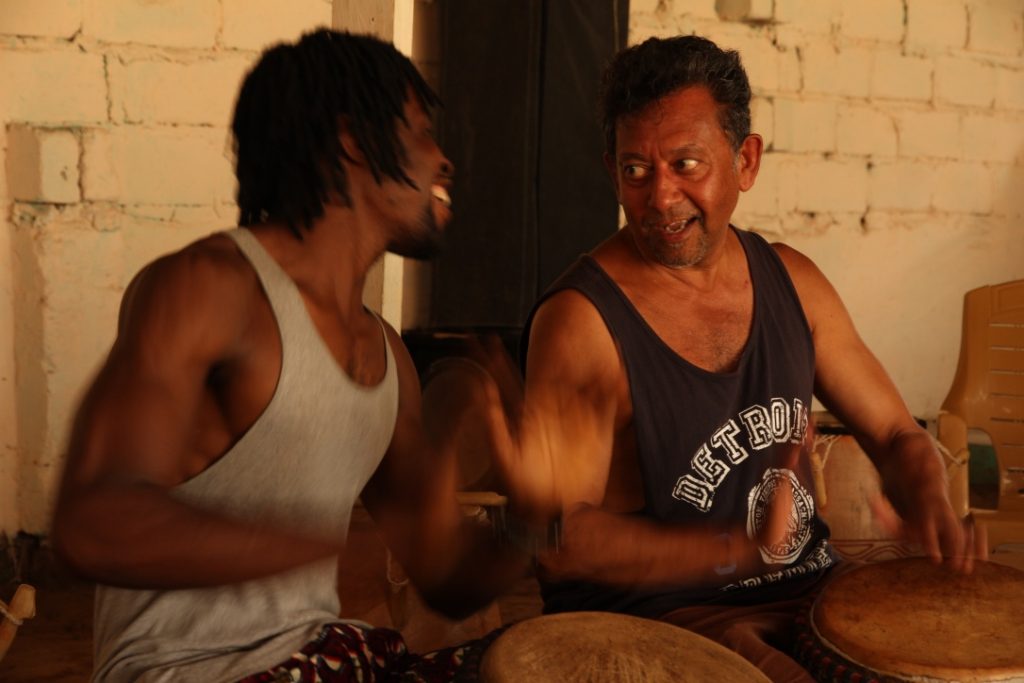The rhythms we play in African Drum music are generally played over cycles that repeat over and over again. They have a starting point and a point where they finish and then go back to the start again. Sometimes a rhythm may be completed over just one cycle, but there can be rhythms that take more than one cycle to complete.
A typical African drumming ensemble might have several different parts being played together. These individual parts which are different to each other, are usually played on drums which range in pitch from high to low.
A typical djembe drumming ensemble may have three djembes, each playing a different supporting rhythm, three dun duns (bass drums) and a solo djembe that improvises, leads the ensemble and communicates with the dancers.
When we combine all these parts together, we get the complete rhythm. A polyrhythm. An African Drumming polyrhythm. More than one rhythm being played at the same time.
In my experience the time signature of a particular rhythm is the same across all the parts. There might be rare occasions when it may be easier to hear a solo phrase over a different time signature to the support rhythms, but usually this is not the way to hear these phrases.
So, how do we hear these African drumming rhythms and phrases correctly or how can these rhythms make sense to us when we first listen to this music? Music that may be unfamiliar to us.
I will be exploring the answers to these questions in subsequent posts.
My ideas on African drumming polyrhythms and my views on how to hear these rhythms are based on several visits to West Africa between 1994 and 2012, playing and studying with master musicians from several different ethnic groups in the region.
I have played in traditional drumming groups at rituals, cultural celebrations and just socially at parties and informal jam sessions, sitting next to the master drummer, listening closely to the solo phrases and support drums, watching the dancers and their steps and observing how the audience and the community respond and react to the music.
Over time this experience has helped me develop an understanding of how complex rhythms are played together, understand the relationship between the individual rhythms being played and the interaction between the drummers and dancers.
Studying and playing music in its cultural context with master musicians in Africa has given me a greater understanding of African drumming, African polyrhythmic concepts and African rhythmic sensibility.
{In the video below watch how the dancer responds to the phrases of the lead drummer while the other drummers play the support parts. The video was taken on a study tour I organised to Ghana. You can see my students in the background enjoying the performance.}
Traditional Dance Performance in Ghana
